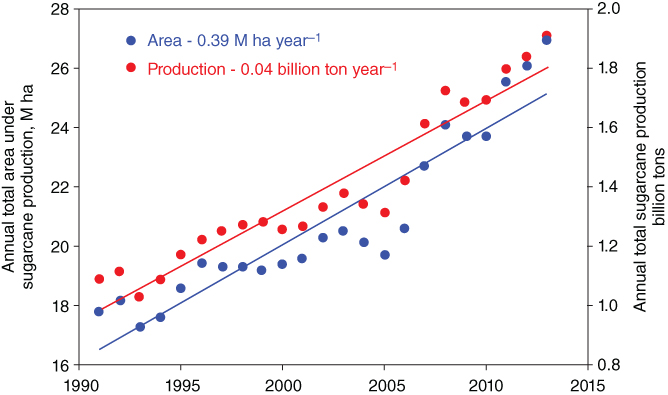6Evaluation of Treatment Wetlands of Different Configuration for the Sugarcane-Mill Effluent under Tropical Conditions
E. Navarro1, R. Pastor2*, V. Matamoros3 and J.M. Bayona3
1Universidad Tecnológica de Izúcar de Matamoros, México
2Cátedra UNESCO de Sostenibilidad-UPC, Spain
3Intituto de Diagnóstico Ambiental y Estudios del Agua, IDAEA-CSIC, Spain
6.1 Introduction
Sugarcane (Saccharum officinarum L.) production is a globally important crop, which represents the 85% of the total sugar production localized in tropical and subtropical countries, crystalline sugar and bio-ethanol being the main final products [1]. According to the Food and Agricultural Organization (FAO), sugarcane was cultivated on an area of 26.94 million hectares (ha) in 121 countries with a total cane production of 1.91 billion metric tons in 2013 (FAOSTAT 2015: http://faostat3.fao.org/browse/Q/QC/E). Since 1990s, the total global area under sugarcane production has been annually increased, with Brazil, India, China, Pakistan and Thailand being the top five producers. Figure 6.1 shows a steady increase in the sugarcane production worldwide mainly due to a gain of both production area and crop productivity.

Figure 6.1 Temporal trend in the sugarcane production worldwide according with the production area and its productivity reprinted (permission pending) from Bhatnagar and Kesari [2].
Generally sugarcane mills include attached ...
Get Constructed Wetlands for Industrial Wastewater Treatment now with the O’Reilly learning platform.
O’Reilly members experience books, live events, courses curated by job role, and more from O’Reilly and nearly 200 top publishers.

